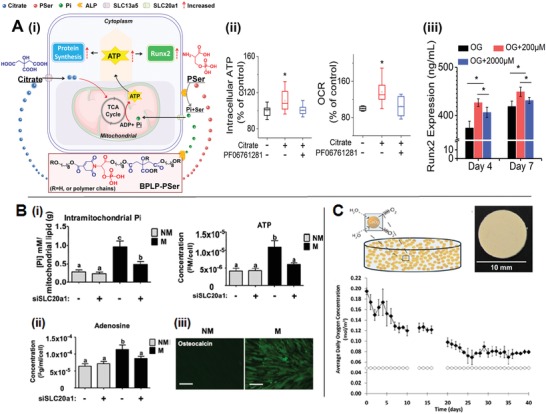Figure 5.

Metabolic regulator release from biomaterials. A) i) Schematic illustration of the citrate‐mediated metabonegenic mechanism in a human mesenchymal stem cell (hMSC) resulting from citrate release upon citrate‐based biomaterial degradation, ii) elevated intracellular ATP levels via modulation of the major energy‐producing pathways (e.g., glycolysis and OXPHOS) by citrate, which subsequently iii) promoted the Runx2 mediated osteo‐differentiation.80 B) Inorganic phosphate (Pi) released from resorbable calcium phosphate was found to i) enter cells to reach the mitochondria where it serves as the direct substrate for ATP syntheses. The cumulated ATP is secreted from cells and ii) degraded to adenosine, which in turn impacts osteogenesis as exhibited by iii) osteocalcin production via autocrine/paracrine signaling (scale bar: 100 µm) (Adapted with permission.19 Copyright 2013, PNAS). C) Oxygen‐generating materials can be designed by embedding oxygen‐forming compounds, like CaO2, into hydrophobic polymers, such as PDMS. A PDMS disk containing 25% w/w CaO2 after soaking in buffer saline could lead to sufficient oxygen generation up to 6 weeks (Adapted with permission.100 Copyright 2012, PNAS).
